Freddie Mac 2012 Annual Report Download - page 16
Download and view the complete annual report
Please find page 16 of the 2012 Freddie Mac annual report below. You can navigate through the pages in the report by either clicking on the pages listed below, or by using the keyword search tool below to find specific information within the annual report.-
 1
1 -
 2
2 -
 3
3 -
 4
4 -
 5
5 -
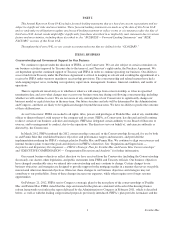 6
6 -
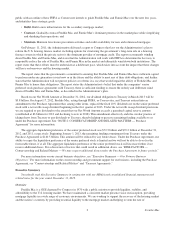 7
7 -
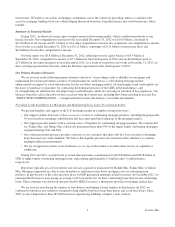 8
8 -
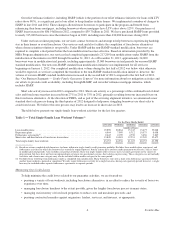 9
9 -
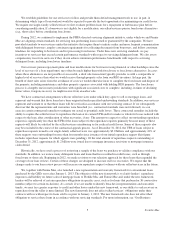 10
10 -
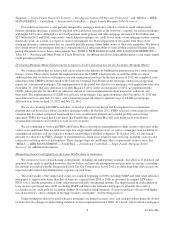 11
11 -
 12
12 -
 13
13 -
 14
14 -
 15
15 -
 16
16 -
 17
17 -
 18
18 -
 19
19 -
 20
20 -
 21
21 -
 22
22 -
 23
23 -
 24
24 -
 25
25 -
 26
26 -
 27
27 -
 28
28 -
 29
29 -
 30
30 -
 31
31 -
 32
32 -
 33
33 -
 34
34 -
 35
35 -
 36
36 -
 37
37 -
 38
38 -
 39
39 -
 40
40 -
 41
41 -
 42
42 -
 43
43 -
 44
44 -
 45
45 -
 46
46 -
 47
47 -
 48
48 -
 49
49 -
 50
50 -
 51
51 -
 52
52 -
 53
53 -
 54
54 -
 55
55 -
 56
56 -
 57
57 -
 58
58 -
 59
59 -
 60
60 -
 61
61 -
 62
62 -
 63
63 -
 64
64 -
 65
65 -
 66
66 -
 67
67 -
 68
68 -
 69
69 -
 70
70 -
 71
71 -
 72
72 -
 73
73 -
 74
74 -
 75
75 -
 76
76 -
 77
77 -
 78
78 -
 79
79 -
 80
80 -
 81
81 -
 82
82 -
 83
83 -
 84
84 -
 85
85 -
 86
86 -
 87
87 -
 88
88 -
 89
89 -
 90
90 -
 91
91 -
 92
92 -
 93
93 -
 94
94 -
 95
95 -
 96
96 -
 97
97 -
 98
98 -
 99
99 -
 100
100 -
 101
101 -
 102
102 -
 103
103 -
 104
104 -
 105
105 -
 106
106 -
 107
107 -
 108
108 -
 109
109 -
 110
110 -
 111
111 -
 112
112 -
 113
113 -
 114
114 -
 115
115 -
 116
116 -
 117
117 -
 118
118 -
 119
119 -
 120
120 -
 121
121 -
 122
122 -
 123
123 -
 124
124 -
 125
125 -
 126
126 -
 127
127 -
 128
128 -
 129
129 -
 130
130 -
 131
131 -
 132
132 -
 133
133 -
 134
134 -
 135
135 -
 136
136 -
 137
137 -
 138
138 -
 139
139 -
 140
140 -
 141
141 -
 142
142 -
 143
143 -
 144
144 -
 145
145 -
 146
146 -
 147
147 -
 148
148 -
 149
149 -
 150
150 -
 151
151 -
 152
152 -
 153
153 -
 154
154 -
 155
155 -
 156
156 -
 157
157 -
 158
158 -
 159
159 -
 160
160 -
 161
161 -
 162
162 -
 163
163 -
 164
164 -
 165
165 -
 166
166 -
 167
167 -
 168
168 -
 169
169 -
 170
170 -
 171
171 -
 172
172 -
 173
173 -
 174
174 -
 175
175 -
 176
176 -
 177
177 -
 178
178 -
 179
179 -
 180
180 -
 181
181 -
 182
182 -
 183
183 -
 184
184 -
 185
185 -
 186
186 -
 187
187 -
 188
188 -
 189
189 -
 190
190 -
 191
191 -
 192
192 -
 193
193 -
 194
194 -
 195
195 -
 196
196 -
 197
197 -
 198
198 -
 199
199 -
 200
200 -
 201
201 -
 202
202 -
 203
203 -
 204
204 -
 205
205 -
 206
206 -
 207
207 -
 208
208 -
 209
209 -
 210
210 -
 211
211 -
 212
212 -
 213
213 -
 214
214 -
 215
215 -
 216
216 -
 217
217 -
 218
218 -
 219
219 -
 220
220 -
 221
221 -
 222
222 -
 223
223 -
 224
224 -
 225
225 -
 226
226 -
 227
227 -
 228
228 -
 229
229 -
 230
230 -
 231
231 -
 232
232 -
 233
233 -
 234
234 -
 235
235 -
 236
236 -
 237
237 -
 238
238 -
 239
239 -
 240
240 -
 241
241 -
 242
242 -
 243
243 -
 244
244 -
 245
245 -
 246
246 -
 247
247 -
 248
248 -
 249
249 -
 250
250 -
 251
251 -
 252
252 -
 253
253 -
 254
254 -
 255
255 -
 256
256 -
 257
257 -
 258
258 -
 259
259 -
 260
260 -
 261
261 -
 262
262 -
 263
263 -
 264
264 -
 265
265 -
 266
266 -
 267
267 -
 268
268 -
 269
269 -
 270
270 -
 271
271 -
 272
272 -
 273
273 -
 274
274 -
 275
275 -
 276
276 -
 277
277 -
 278
278 -
 279
279 -
 280
280 -
 281
281 -
 282
282 -
 283
283 -
 284
284 -
 285
285 -
 286
286 -
 287
287 -
 288
288 -
 289
289 -
 290
290 -
 291
291 -
 292
292 -
 293
293 -
 294
294 -
 295
295 -
 296
296 -
 297
297 -
 298
298 -
 299
299 -
 300
300 -
 301
301 -
 302
302 -
 303
303 -
 304
304 -
 305
305 -
 306
306 -
 307
307 -
 308
308 -
 309
309 -
 310
310 -
 311
311 -
 312
312 -
 313
313 -
 314
314 -
 315
315 -
 316
316 -
 317
317 -
 318
318 -
 319
319 -
 320
320 -
 321
321 -
 322
322 -
 323
323 -
 324
324 -
 325
325 -
 326
326 -
 327
327 -
 328
328 -
 329
329 -
 330
330 -
 331
331 -
 332
332 -
 333
333 -
 334
334 -
 335
335 -
 336
336 -
 337
337 -
 338
338 -
 339
339 -
 340
340 -
 341
341 -
 342
342 -
 343
343 -
 344
344 -
 345
345 -
 346
346 -
 347
347 -
 348
348 -
 349
349 -
 350
350 -
 351
351 -
 352
352 -
 353
353 -
 354
354 -
 355
355 -
 356
356 -
 357
357 -
 358
358 -
 359
359 -
 360
360 -
 361
361 -
 362
362 -
 363
363 -
 364
364 -
 365
365 -
 366
366 -
 367
367 -
 368
368 -
 369
369 -
 370
370 -
 371
371 -
 372
372 -
 373
373 -
 374
374 -
 375
375 -
 376
376 -
 377
377 -
 378
378 -
 379
379 -
 380
380 -
 381
381 -
 382
382 -
 383
383 -
 384
384 -
 385
385 -
 386
386 -
 387
387 -
 388
388 -
 389
389 -
 390
390 -
 391
391 -
 392
392 -
 393
393 -
 394
394 -
 395
395
 |
 |
The serious delinquency rate for our single-family credit guarantee portfolio improved at December 31, 2012, compared
to December 31, 2011. Excluding relief refinance loans, the improvement in borrower payment performance during 2012
reflects an improved credit profile of borrowers with loans originated since 2008. However, several factors, including the
lengthening of the foreclosure process, have resulted in loans remaining in serious delinquency for longer periods than
experienced prior to 2008, particularly in states that require a judicial foreclosure process. As of December 31, 2012 and
2011, the percentage of seriously delinquent loans that have been delinquent for more than six months was 72% and 70%,
respectively.
The balance of our non-performing loans increased during the third quarter of 2012, due to a change in the treatment of
single-family loans discharged in Chapter 7 bankruptcy to classify these loans as TDRs (unless they were already classified
as TDRs for other reasons), regardless of the borrowers’ payment status. Except for this change in classification, which
resulted in approximately $19.5 billion in UPB of loans being newly classified as TDRs in the third quarter of 2012, the
balance of our non-performing loans would have declined in every quarter of 2012. Although we experienced improvement
in the amount of our non-performing loans during the year, this balance remained high at the end of 2012, compared to
periods prior to 2009.
The credit losses and loan loss reserves associated with our single-family credit guarantee portfolio remained elevated in
2012, due, in part, to:
• Losses associated with the continued high volume of foreclosures and foreclosure alternatives. These actions relate to
the continued efforts of our servicers to resolve our large inventory of seriously delinquent loans. Due to the length of
time necessary for servicers either to complete the foreclosure process or pursue foreclosure alternatives on seriously
delinquent loans in our portfolio, we expect our credit losses will continue to remain elevated even if the volume of
new serious delinquencies declines.
• Continued negative effect of certain loan groups within the single-family credit guarantee portfolio, such as: (a) loans
originated in 2005 through 2008; and (b) loans with higher-risk characteristics (such as those underwritten with
certain lower documentation standards and interest-only loans), a significant portion of which were originated in 2005
through 2008. These groups continue to be large contributors to our credit losses.
• Cumulative decline in national home prices of 22% since June 2006, based on our own index. As a result of this price
decline, approximately 15% of loans in our single-family credit guarantee portfolio, based on UPB, had estimated
current LTV ratios in excess of 100% (i.e., underwater loans) as of December 31, 2012.
• Weak financial condition of many of our mortgage insurers, which has reduced our actual recoveries from these
counterparties as well as our estimates of expected recoveries.
Some of our loss mitigation activities create fluctuations in our delinquency statistics. See “MD&A — RISK
MANAGEMENT — Credit Risk — Mortgage Credit Risk — Single-family Mortgage Credit Risk —Credit Performance —
Delinquencies” for further information about factors affecting our reported delinquency rates.
Consolidated Financial Results — 2012 versus 2011
Net income was $11.0 billion for 2012 compared to net income (loss) of $(5.3) billion for 2011. Key highlights of our
financial results include:
• Net interest income for 2012 decreased to $17.6 billion from $18.4 billion for 2011, mainly due to the impact of a
reduction in the balance of our higher-yielding mortgage-related assets, partially offset by lower funding costs.
• Provision for credit losses for 2012 declined to $1.9 billion, compared to $10.7 billion for 2011. The significant
reduction in provision for credit losses in 2012 primarily reflects declines in the volume of newly delinquent loans
(largely due to a decline in the portion of our single-family credit guarantee portfolio originated in 2005 through
2008), and lower estimates of incurred loss due to the positive impact of an increase in national home prices.
• Non-interest income (loss) was $(4.1) billion for 2012, compared to $(10.9) billion for 2011. The improvement was
largely driven by a decrease in derivative losses during 2012 compared to 2011.
11 Freddie Mac
